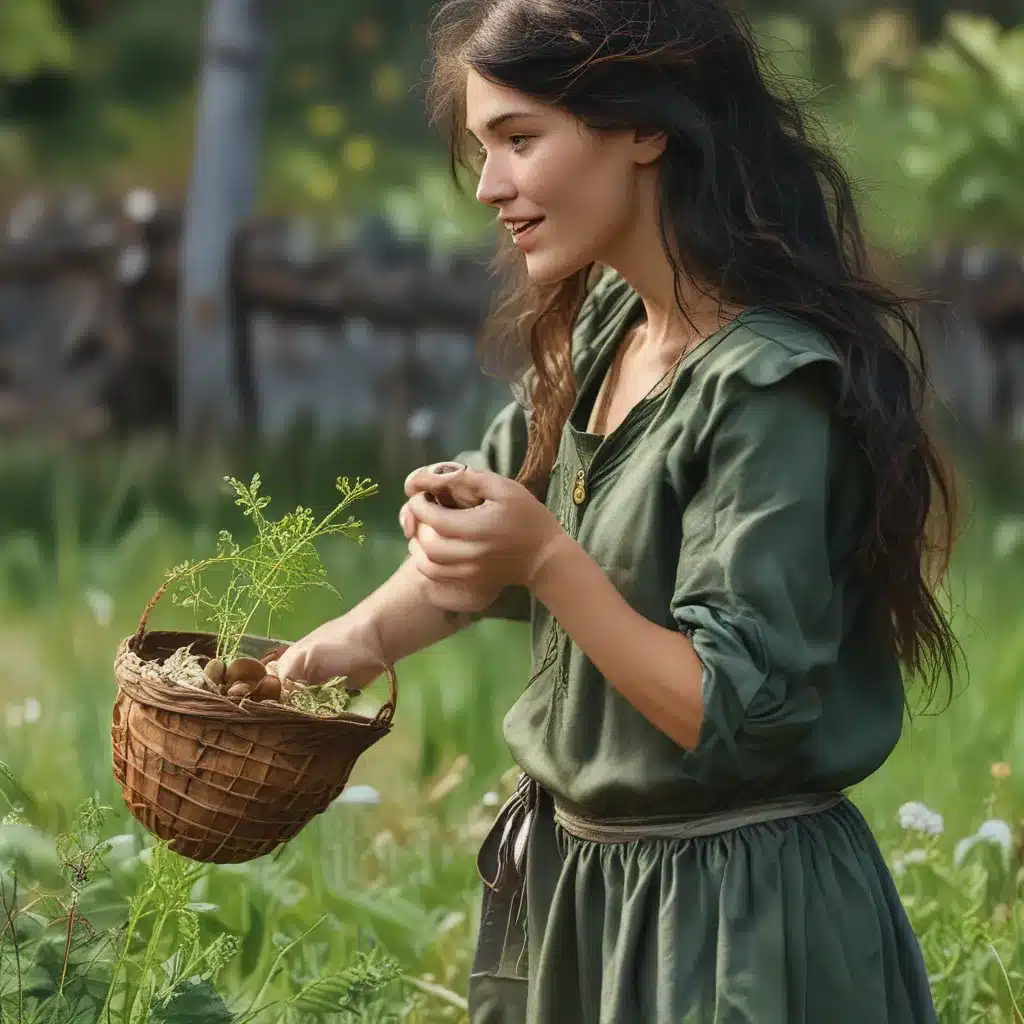
Have you ever stumbled upon a patch of vibrant green leaves or a cluster of colorful flowers, only to dismiss them as mere “weeds”? Well, my friend, it’s time to open your eyes to the incredible abundance of wild edible plants all around us.
The Lost Art of Foraging
Growing up, I was always a curious kid, wandering the woods and fields near my home, fascinated by the natural world. But it wasn’t until I discovered the works of foraging experts like Katrina Blair that I truly began to appreciate the wealth of nourishment and medicine that lay waiting, just beyond our manicured lawns and paved sidewalks.
Katrina’s book, The Wild Wisdom of Weeds, opened my eyes to 13 “essential plants for human survival” that she’s encountered in her travels around the globe. These so-called “weeds” – including familiar faces like dandelion, chickweed, and purslane – are not only edible and medicinal, but they’re also remarkably abundant, often thriving in the very places we tend to shun them.
As I delved into Katrina’s work and explored the world of wild foraging, I couldn’t help but feel a deep sense of wonder and connection. These plants, which we so often dismiss as pests, are in fact a true gift from nature – a testament to the incredible adaptability and resilience of the natural world.
Reclaiming Our Ancestral Knowledge
The more I learned, the more I began to realize that the art of foraging was not some niche hobby, but rather a fundamental part of our ancestral heritage. For millennia, human societies around the world have relied on the bounty of wild edible plants to sustain themselves, weaving these plants into the fabric of their cultures, diets, and even spiritual practices.
Take the Sami people of Lapland, for example. As Katrina shares in her book, they have long used the leaves of the humble dock plant as a natural rennet substitute, allowing them to make traditional buttermilk and cheese. Or consider the people of Syria, who incorporate the tender greens of mallow into a beloved dish called khebbese, combining them with bulgar wheat, olive oil, and onions.
These examples are just the tip of the iceberg. Across the globe, from the Andes to the Himalayas, indigenous communities have maintained a deep and intimate relationship with the wild plants around them, harnessing their nutritional and medicinal properties for the benefit of their people.
Reclaiming Our Connection to Nature
As I delved deeper into the world of wild foraging, I couldn’t help but feel a profound sense of longing – a yearning to reclaim that lost connection to the natural world. After all, these plants didn’t just provide sustenance; they were woven into the very fabric of our ancestors’ lives, shaping their cultures, their traditions, and their ways of being.
And yet, in our modern, industrialized world, we’ve become increasingly disconnected from the land that sustains us. We’ve relegated the “weeds” to the margins, relegating them to the status of unwanted pests to be eradicated, rather than cherished as the valuable resources they are.
But as I made my way through Katrina’s book, I couldn’t help but feel a sense of hope – a realization that, even in our fast-paced, technology-driven lives, we can still rediscover the ancient wisdom of our forebears. By learning to identify and incorporate these wild edible plants into our diets and our daily lives, we can not only nourish our bodies, but also nurture our connection to the natural world.
A Foraging Renaissance
And that’s precisely what I’ve witnessed in my own community, as more and more people are embracing the wonders of wild foraging. At the Thornapple Community-Supported Agriculture (CSA) service, for example, we’ve been incorporating wild-harvested greens, herbs, and even flowers into our weekly produce boxes, giving our members a chance to explore the bounty of their own backyards.
It’s been incredible to see the excitement and curiosity that these wild edibles have sparked. Our members have been sharing their own foraging adventures, swapping recipes, and even organizing group foraging walks to discover new and exciting plants. And the best part? These wild foods aren’t just delicious – they’re packed with nutrients, often surpassing their cultivated counterparts in terms of their vitamin, mineral, and antioxidant content.
But the benefits of foraging go far beyond the purely culinary. As Katrina so eloquently puts it, these plants can serve as powerful tools for self-reliance, helping us to “remember our identity rooted in the wisdom of our indigenous ancestors while living in today’s modern civilization.”
Embracing the Wild Abundance
And so, as I continue on my own foraging journey, I can’t help but feel a sense of gratitude and wonder for the incredible abundance that surrounds us. Sure, these “weeds” may not have the polished perfection of their cultivated cousins, but they possess a raw, primal beauty that speaks to the very heart of the natural world.
Whether it’s the bold, peppery kick of a freshly picked mustard green, the delicate sweetness of a purslane leaf, or the soothing, anti-inflammatory properties of a plantain poultice, these plants offer us a chance to reconnect with the land in a deeply nourishing and empowering way.
So the next time you’re out for a stroll and notice a patch of “weeds” underfoot, I encourage you to pause, take a closer look, and consider the incredible gifts they have to offer. Who knows – you might just stumble upon your new favorite superfood, or even uncover a powerful medicine that’s been hiding in plain sight all along.
The world of wild foraging is truly a frontier waiting to be explored, and I, for one, can’t wait to see what other discoveries lie in store. After all, as Katrina so eloquently puts it, “the wild weeds are examples of nature’s creative edge, leading the way of the new frontier that is constantly forming.”
So let’s embrace that frontier together, and see what wonders the natural world has in store.



